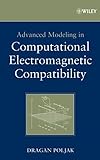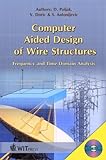Nature of Time (A)symmetry in Modeling of Physical Systems
Dragan Poljak$^1$ and Mirko Jakić$^2$
$^1$Faculty of Electric Engineering, Mechanical Engineering and Naval Architecture, University of Split
$^2$Department of Philosophy, Faculty of Humanities and Social Sciences, University of Split
Abstract The paper deals with the concept of the (a)symmetry of time (time arrow) in modeling of realistic physical systems with particular emphasis to electromagnetic phenomena. Contrary to the fact that the Maxwell’s equations of electromagnetism are time invariant, (there is no preference regarding the direction of time), the usual solutions of the wave equations derived from Maxwell’s equations are related to the retarded potentials, thus dropping out the advanced potentials as non-physical. The retarded potentials represent the electromagnetic waves detected at an observation point once they left the source. The advanced solutions are related to the waves arriving at the detector before they leave the source, though mathematically possible, which are never observed in nature. These waves are eliminated through prescribing certain set of boundary and initial condition, respectively.
However, one can mathematically construct the time reversal version of electromagnetics which has been successfully applied in some engineering applications.
Time reversal or T-symmetry is related to the symmetry of physical laws under a time reversal transformation: $t\to -t$.
Thus, this paper discusses the notion of time reversal invariance of physical theories, the character of such time reversal operators, and how physical properties change under time reversal. Finally, a recent disagreement among philosophers of science if classical electromagnetics is time-reversal invariant is discussed.
Namely, it is stated by some authors that Maxwell’s equations are not time reversal invariant and the sign change of the magnetic field is just a mathematical trick to keep the time reversal invariance. This statement is not found to be correct, as there is a clear physical reason for the current density to change the sign under time reversal. As a matter of fact, the time direction reversal causes the charge velocity to change sign, thus requiring the associated current density to change sign too.
Finally, a change of sign of the current density causes a sign change in the related magnetic field. Therefore, Maxwell’s equations appear to be invariant under time reversal.
However, it is important to emphasize that the electromagnetic propagation in a lossy medium is time reversal invariant only if an inverted-loss medium is considered for the reverse times.



